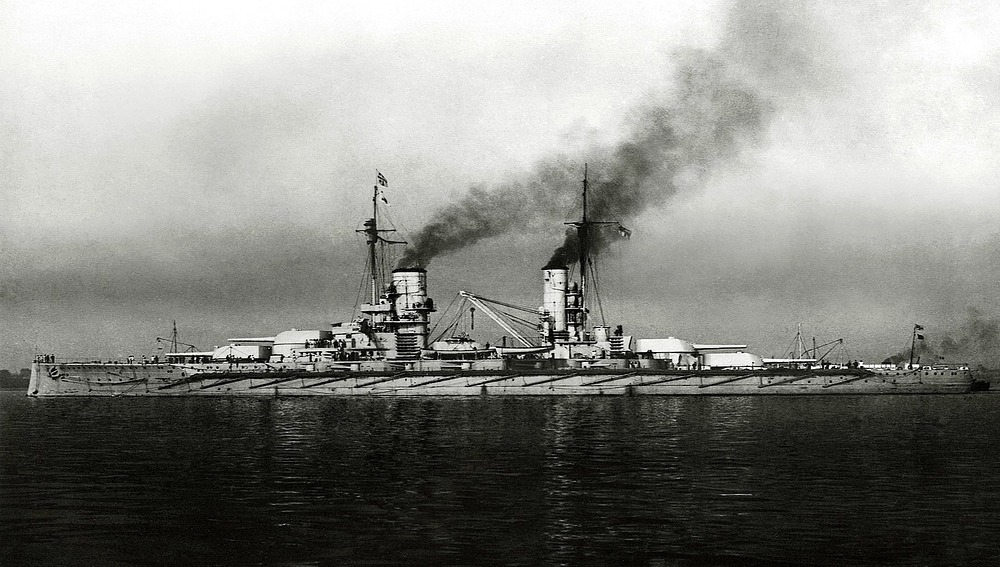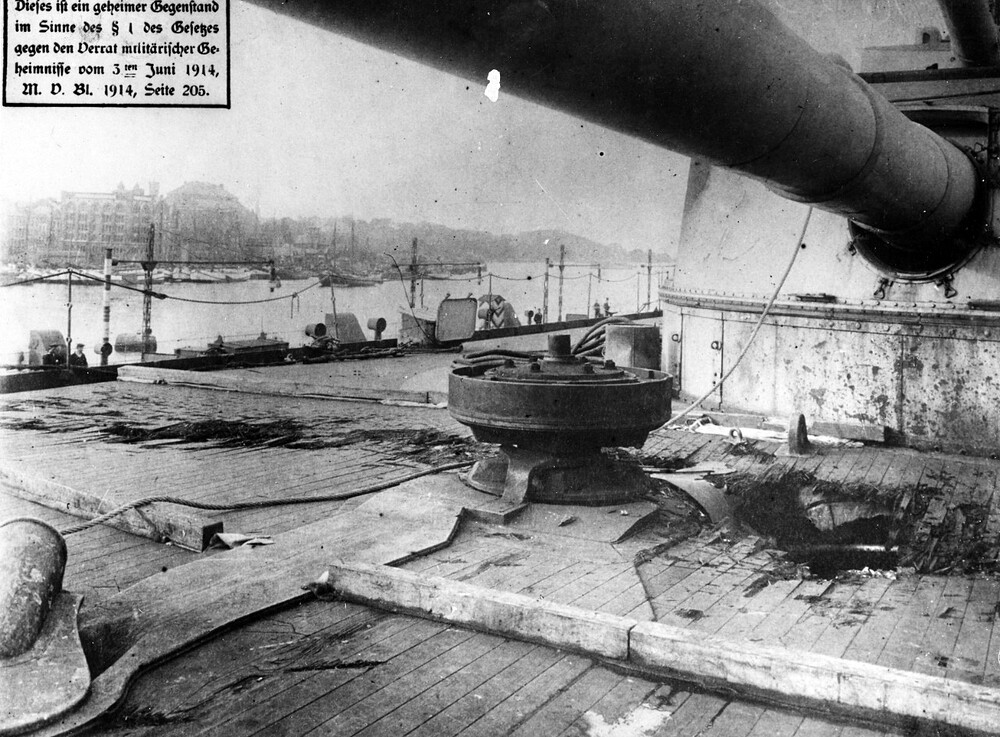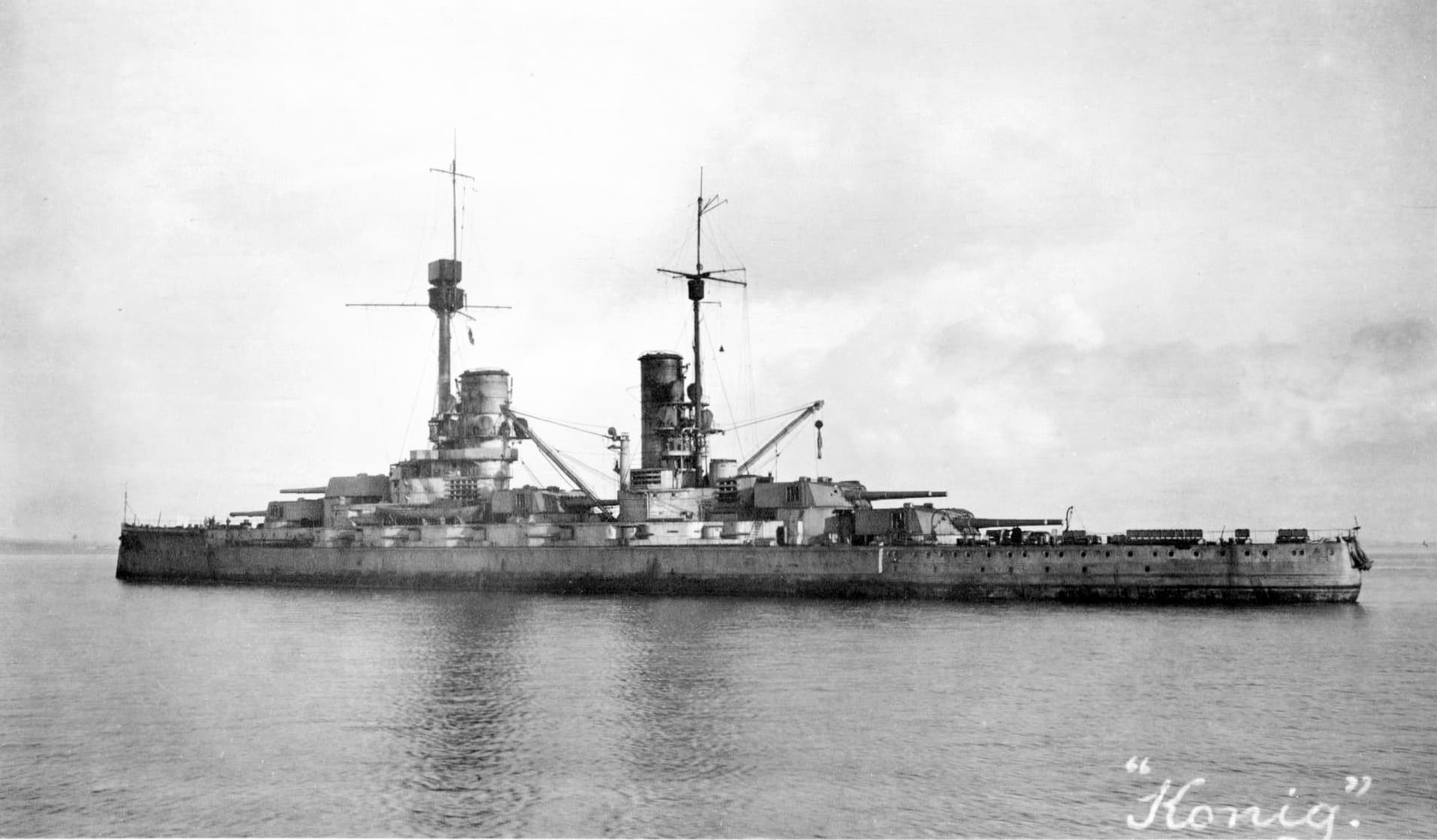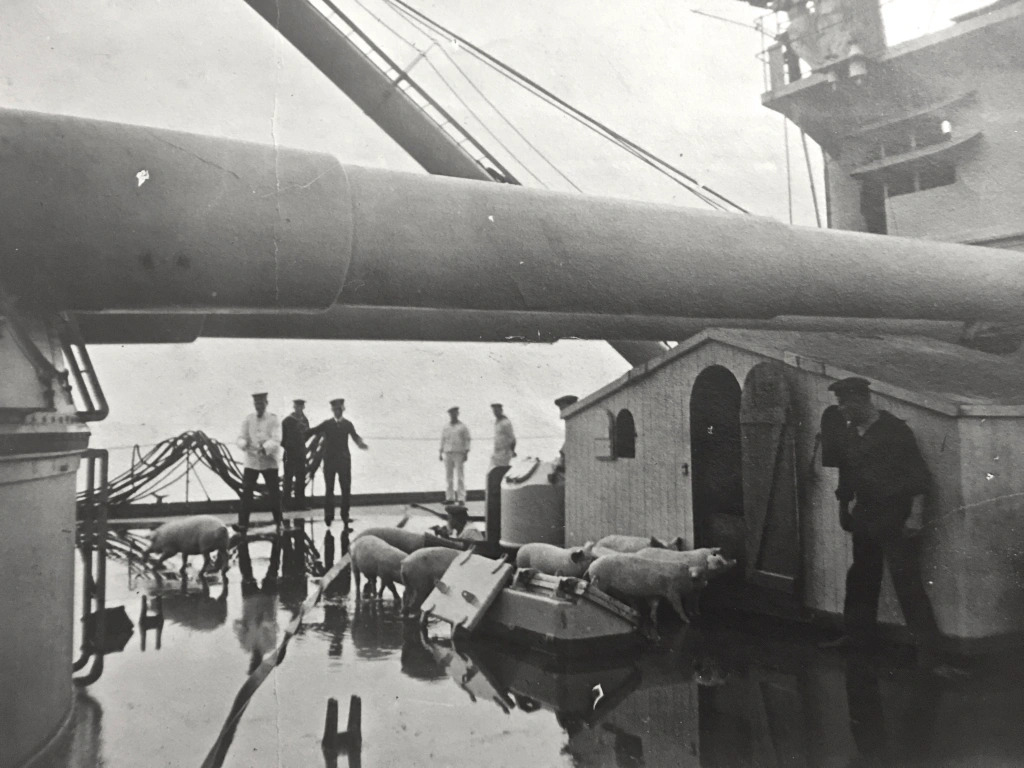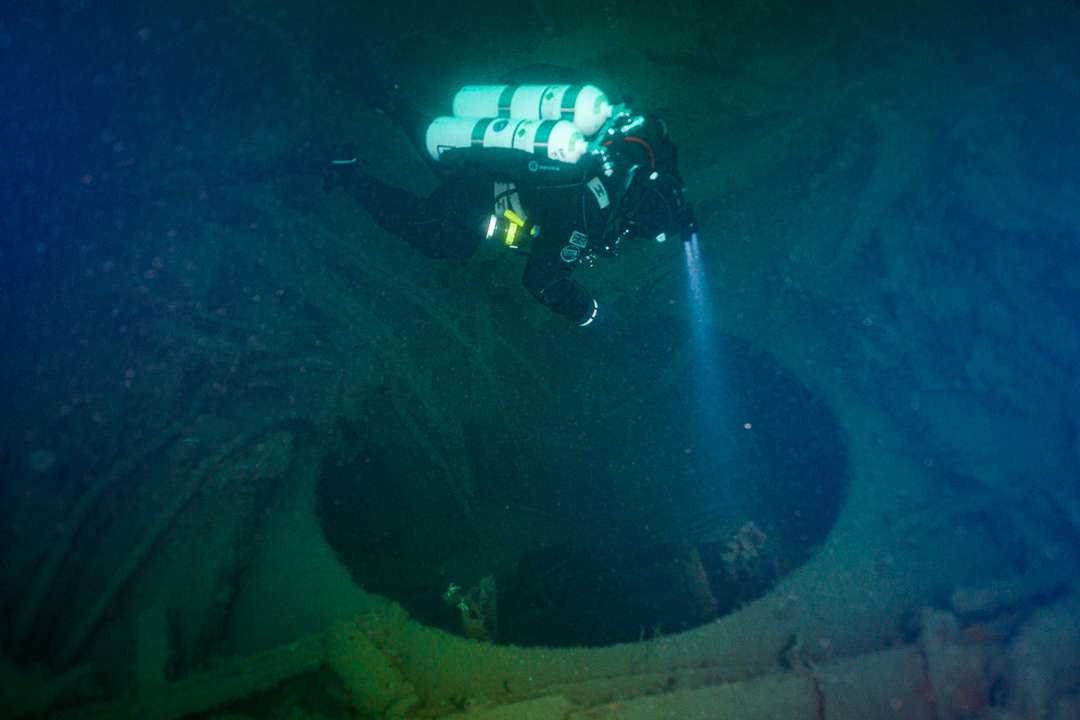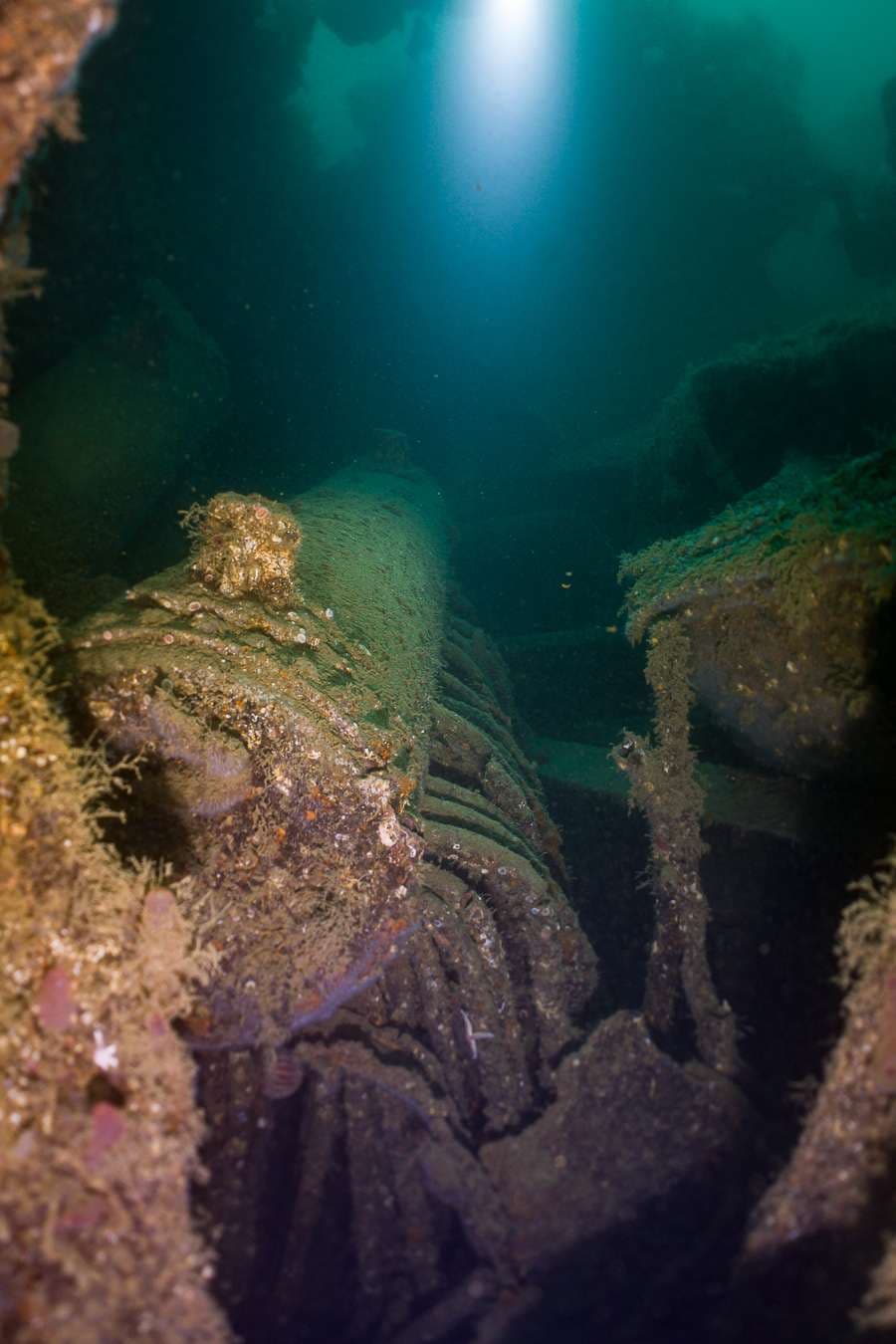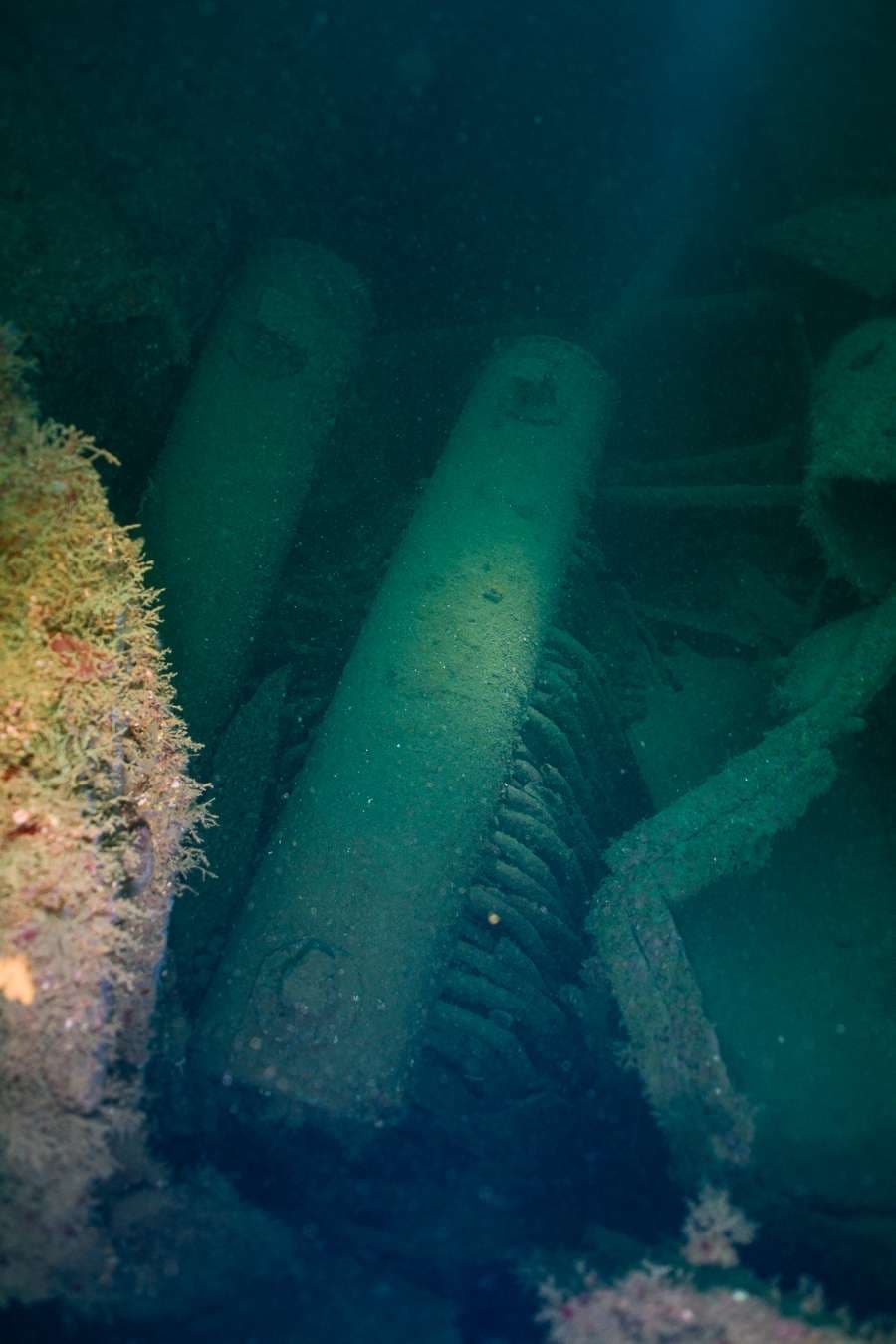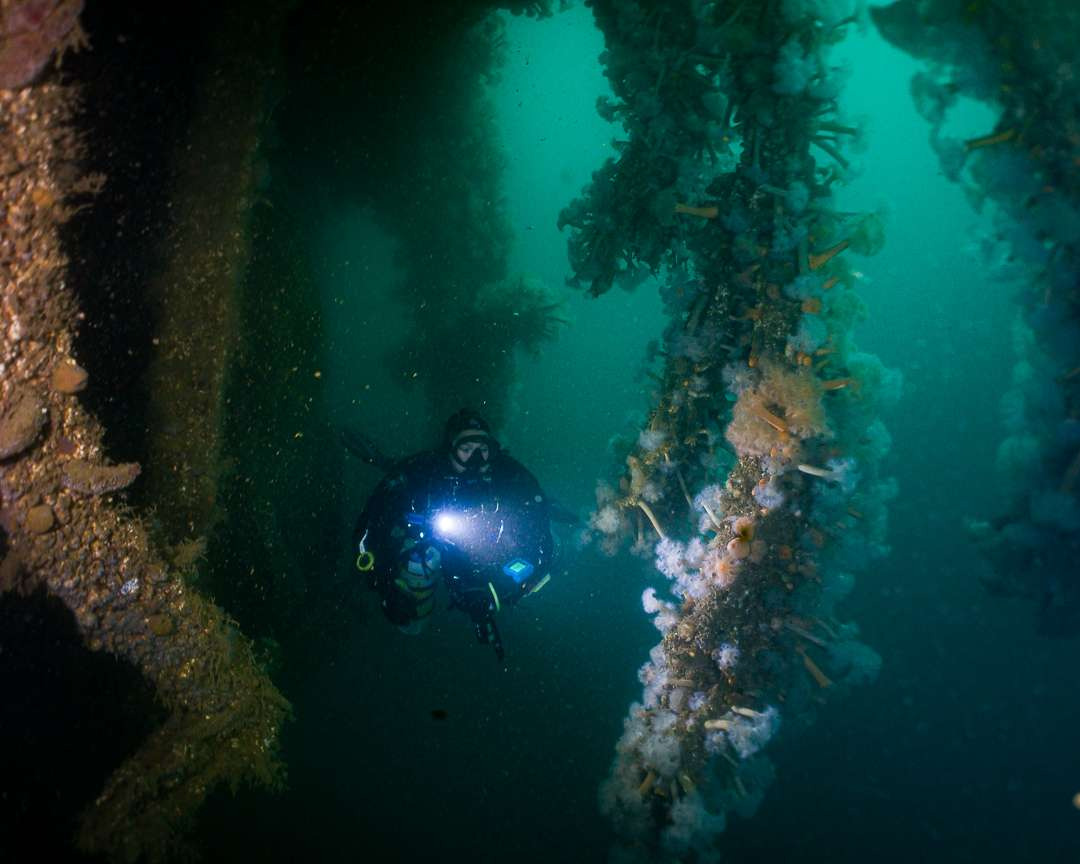- Yes
- No
(SMS König seen prior to the Battle of Jutland)
This is a suggestion covering the Kaiserliche Marine battleship SMS König. The Battleship SMS König was the lead ship of the König-class battleships, which represented a logical evolution of the preceding Kaiser-class. They retained the same heavy armor and caliber of gun. Still, they were the first German battleships to have all their guns mounted along the centerline, a compromise for increased firepower as the original plan to arm them with 32cm guns was deemed too expensive. SMS König would be an excellent addition to the German Bluewater tree due to its centerline-mounted guns, which allow for easier broadside firing, and its decent armor arrangement. These factors combined would make SMS König an interesting and potentially very powerful ship to have in the German Bluewater tree.
Background:
Spoiler
SMS König was a member and the lead ship of the König-class battleships. This class of battleships was the fourth and final German dreadnought class that began construction before the outbreak of WWI and were the penultimate German Battleships built, with the only ships superseding them being the four Bayern class battleships. König herself, like her sister ships, would be involved in virtually every major operation of the First World War, including the legendary Battle of Jutland in 1916, where she was among the first ships to engage the British Battle Lines. She would partake in Operation Albion near the end of the war, and her crew would later join the Kiel Naval mutinies, resulting in her captain being injured and several officers killed. Following the armistice on 11 November 1918, she was ordered to sail with a fleet under the command of Rear Admiral Ludwig von Reuter to be interned in the British naval base at Scapa Flow. She would remain in Scapa Flow until 21 June 1919, when her crew scuttled König during the (in)famous “Great Scuttle”. König, unlike many of the other ships in the fleet, was never salvaged and remains on the bottom of Scapa Flow to this day.
History:
Spoiler
Design and Development of the König-class
The König class was initially ordered not as a direct successor to the preceding Kaiser-class, but as a marginal improvement, intended to be a modified repeat of the SMS Prinzregent Luitpold, with the goal of maximizing efficiency and minimizing delays. However, early on, this was deemed unsuitable due to delays and issues with the development of the diesels for this class. To rectify these issues, the power plant was copied and modified from the Kaiser-class power plant. Aside from the propulsion issues, additional studies were conducted based on the suggestion of fitting the ships with triple gun mounts, similar to those being experimented with by the Austro-Hungarian Navy. Additionally, it was initially proposed that the ship should mount newer 32cm guns, but this was ultimately dropped due to cost considerations. Additional modifications to the design included removing the entire tertiary battery and adding extra armor compared to the preceding Kaiser class.
Perhaps the most significant change, however, was the decision to mount all the main battery guns on the centerline, a first for German Naval development and a compromise to the debates of up-gunning the design. Another first was the deployment of purpose-built 8.8cm Flak guns for AA use as the threat of aircraft was fully recognized. In the end, four ships of this design would be ordered, one as a new build non-replacement unit provisionally named “S” and two replacements named Ersatz-Kurfürst Friedrich Wilhelm (later Großer Kurfürst) and Ersatz-Weißenburg (later Markgraf) under the 1911 Program. A fourth and final ship built to a modified design was ordered as part of the 1912 Program under the name Ersatz-Brandenburg (later Kronprinz).
History of SMS König:
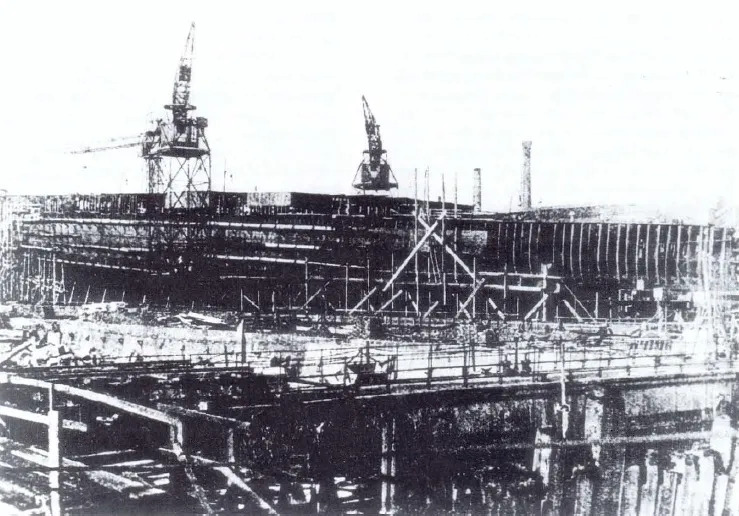
(Battleship “S” under construction at the Kaiserliche Werft Shipyard)
The hull that would become known as SMS König was ordered as part of the 1911 Naval Shipbuilding Program. The hull was laid down in October 1911 at the Kaiserliche Werft dockyards in Wilhelmshaven under the provisional name “Battleship S”. The construction of the ship would progress at a relative pace, and the ship would be launched and christened on 11 March 1913 by the cousin of Kaiser Wilhelm, Albrecht, Duke of Württemberg. Following her launch, König, was sent for final fitting out and would be completed and ready for trials in August 1914. However, due to the outbreak of the First World War, the ship’s fitting out was sped up considerably. As a result, the planned complement of 8.8cm Flak guns was unavailable due to production delays, and the ship was forced to sail without them until 1916. Despite the delays, the ship was still commissioned on 9 August 1914 and was assigned to the 3rd Squadron, 5th Division.
However, before the ship could set sail on her first training cruise, König suffered several accidents that delayed her immediate deployment. These incidents included running aground in the Kaiser Wilhelm Canal and subsequently being rammed by her sister Großer Kurfürst, causing severe damage to the ship’s stern. Repairs would take several months and would not be completed until January 1915, at which point the remaining two ships of the class had been completed. During the same month, the 3rd Division, along with König, was sent out on a training cruise to practice squadron maneuvers, gunnery, and torpedo training. As a result of this cruise, Konig and the rest of the squadron missed the Battle of Dogger Bank and therefore spent most of 1915 screening, minelaying operations, and carrying out training maneuvers. They would also participate in several inconclusive fleet advances. 1916, however, would prove to be a far more eventful year with König and her sister ships forming a part of the supporting force for the German raids on Lowestoft and Great Yarmouth in April 1916, which were met with great success.
The most significant operation König would partake in, however, was when she was selected to lead the 3rd Squadron at the Battle of Jutland, which occurred on 31 May to 1 June 1916. König, in part, was chosen due to her already sizable flag facilities that had been added to the design during construction. During the battle, König, along with the rest of the 3rd Squadron, would form the vanguard of the German High Seas fleet and would repeatedly, along with her sister ships, engage the British Battlecruiser Fleet and the Fifth Battle Squadron. During these engagements, König’s secondary battery proved its effectiveness by disabling the British Destroyers HMS Nestor and HMS Nomad. At the same time, her main battery may have also played a role in the sinking of HMS Defence, which was struck several times by large caliber shells, resulting in a magazine detonation that sank the Armored Cruiser. During the Battle of Jutland, König would suffer heavy damage, including several hits that destroyed two secondary guns and their magazines. It has been theorized that had the König been using British-style propellant charges, she would have most likely suffered a full-scale magazine detonation and likely sunk. During the battle König would take fire, which resulted in her being hit 16 times while she herself fired off 167 305mm rounds and 137 150mm rounds. Her casualties were also amongst the highest in the German High Seas Fleet, suffering 90 casualties (including Konteradmiral Behncke), and repairs to the ship would keep her out of action until 21 July 1916.
(Damage aboard SMS König following the Battle of Jutland)
Following the repair and refit period, König spent the next year partaking in operations against the Russian Navy in the Baltic and was recalled to Wilhelmshaven for refit in 1917. This refit saw her gain a newly designed mast and new Fire Control systems already present on her sister ship, Kronprinz. In October 1917 König was assigned to take part in Operation Albion and the eventual Battle of Moon Sound, where she caused extensive damage to the Russian Borodino-class Battleship Salva and forced her scuttling. In November 1918, her crew partook in the Kiel Mutiny that followed the Naval order of 24 October 1918. This mutiny resulted in the cancellation of the final planned German Fleet Offensive. And several days later, a Ceasefire was announced. As part of the terms of the ceasefire, the German High Seas Fleet was ordered to sail to Rosyth to be interned for the duration of the Negotiations. On the morning of 21 November 1918, 70 ships of the German High Seas Fleet were ordered to sail to Rosyth, where a fleet of 370 Allied Warships met them. Eventually, the 70 German Ships were ordered to sail to Scapa Flow in the Orkney Islands for internment until the conclusion of the Peace Negotiations, after which the fleet would be divided among the victorious countries. However, König, owing to necessary repairs, would only arrive in December 1918.
(SMS König at the end of the war, looking a little worse for wear)
Conditions in the Internment fleet were, from the very beginning, deplorable, and the mood aboard the ships was described as one of complete demoralization. Early on, it was noted by British Sailors that there had been a full breakdown of the chain of command. The remaining German sailors were reportedly extremely undisciplined. Furthermore, food shipped from Germany was noted to be of relatively poor quality and nearly inedible. As a result, it was observed that sailors on board the ships, including König, took to catching fish and even seagulls for food. The sailors were further demoralized by tight restrictions on inter-fleet activities. They were not permitted to leave their ships for any reason, including visiting other German ships in the fleet. Moreover, due to manpower reductions in the fleet, it became nearly impossible to operate basic systems aboard the ships, further demoralizing the crew.
(SMS König’s crew herding pigs during the ship’s internment)
As the diplomats squared away at the Paris Peace Conference, the end date of the ceasefire agreement was quickly approaching. Fearing the worst, Admiral Ludwig von Reuter began to consider scuttling the fleet in Scapa Flow to prevent the British Royal Navy from capturing the ships. Scuttling was not a new option; in fact, Rueter had discussed it in January 1919. However, with the deadline fast approaching, Admiral Rueter gave the order to prepare the ships of the High Seas Fleet for scuttling. Thus, on 21 June 1919 at 10:00 AM, following the departure of the British Grand Fleet for exercises, Admiral Reuter ordered the following signal to be sent: “To all Commanding Officers and the Leader of the Torpedo Boats. Paragraph Eleven of to-day’s date. Acknowledge. Chief of the Interned Squadron”. Almost immediately, scuttling efforts began, but the effects were not apparent until noon, when the Battleship Friedrich der Grosse listed heavily to starboard and the other German ships hoisted the Imperial German flag. By the end of the day, most of the ships of the High Seas Fleet had sunk, including SMS König, which rolled over and sank in a deeper part of Gutter Sound at 14:00. As a result of this, Admiral von Reuter and the crews of the German ships were taken as prisoners of war.
Following the scuttling, salvage efforts began in the 1920s and continued well into the 1930s and 1940s, with SMS Derflinger only being scrapped in 1946. König, however, was never entirely salvaged and remains on the bottom of Gutter Sound to this day, 38 meters underwater. The ship is rarely dived due to her poor condition from salvage operations that severely damaged the wreck; however, she remains recognizable. In 2001 König, along with her sister SMS Markgraf and SMS Kronprinz, as well as the other remaining ships on the bottom, were designated maritime scheduled ancient monuments. This designation was applied to protect the wrecks from further salvage and to prohibit the removal of artifacts unless approved by relevant governmental organizations. In 2019, König briefly became the center of international news when her original salvage rights were put up for auction and eventually sold for £25,500 along with those of her sisters. However, their status and protections are still legally binding.
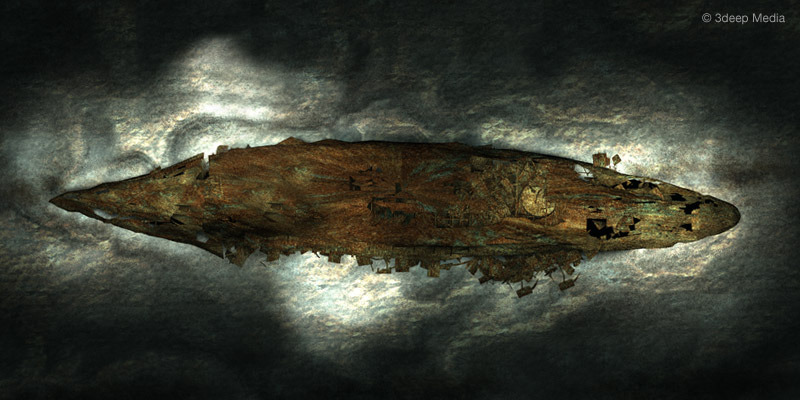
(The wreckage of the Battleship König as she lies on the bottom of Gutter Sound, still bearing scars from the salvage operations)
Specifications for SMS König (1914)
Spoiler
General Characteristics
Displacement (Standard): 25,796 tonnes, (Full Load): 28,600 tonnes
Length: 174.7m (wl) 175.4m (oa)
Beam: 29.5m
Draught: 9.19m
Complement: 1,095 +41 (Standard complements) 1163+55 (As a Squadron Flagship)
Machinery
Propulsion: Three oil-fired and twelve coal-fired marine-type boilers, three sets of Parsons turbines. Three screws
Power: 31,000 shp
Speed: 21 knots
Armament :
Primary:
5 x 2 30.5cm/50 SK L/50 in Drh LC/1911 turrets
Secondary/Anti-Aircraft
14 x 1 15cm/45 SK L/45 in MPL C/06.11 casemate turrets
6 x 1 8.8cm/45 SK L/45 in MPL C/01-06 mounts
Torpedo Armament
5 x 1 50cm submerged torpedo tubes with G7 Torpedoes
Armor :
Deck 60-100mm.
Forward control tower 300mm (on sides).
Lower belt 350mm.
Upper belt 180mm.
Turrets 300mm (sides).
Casemate 170mm
Additional Photos:
Spoiler
(Several Views of the König wreck from a gentleman who kindly permitted me to use them in this suggestion)
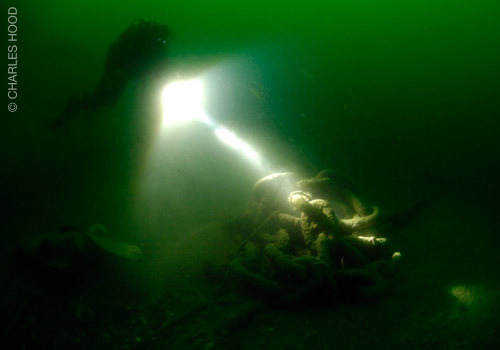
(A diver inspects a pile of anchor chain near the destroyed bow of the ship)
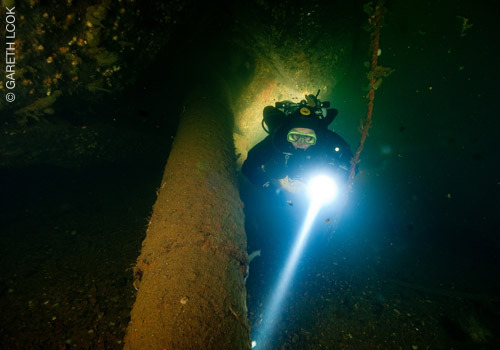
(A diver photographed next to one of the Casemate guns)
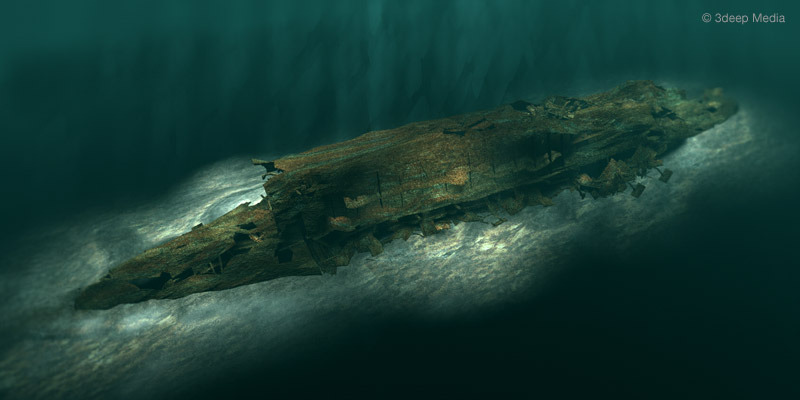
(An additional view of the wreck showing the effects of the salvage operations)
Text Sources:
Spoiler
Dodson, Aidan. The Kaiser’s Battlefleet: German Capital Ships 1870-1918. Seaforth Publishing, Pen & Sword Books Ltd, 2016.
Germany 30.5 cm/50 (12") SK L/50 - NavWeaps
Germany 15 cm/45 (5.9") SK L/45 - NavWeaps
Germany 8.8 cm/45 (3.46") SK L/45 - NavWeaps
McCartney, Innes. Scapa 1919: The Archaeology of a Scuttled Fleet. Osprey Publishing, 2019.
Pre-World War II Torpedoes of Germany - NavWeaps
König-class battleship - Wikipedia
SMS Konig
SMS. König : Dive Guide | Scapa Flow Wrecks
SMS König : History | Scapa Flow Wrecks
SMS König - Wikipedia
Image Sources:
Spoiler
Battleship SMS König - Militär Wissen
König 3D Shipwreck Tour | Scapa Flow Wrecks
NH 2408 SMS KÖNIG (German battleship, 1913)
SMS_Koenig_1916.jpg (4011×2275)
SMS Konig
The Scuttling of the German Fleet: Life Aboard Ship
Special Thanks to T Holgate of the South Coast Wrecks Project (SCWP) for the use of his wreck images in this suggestion
